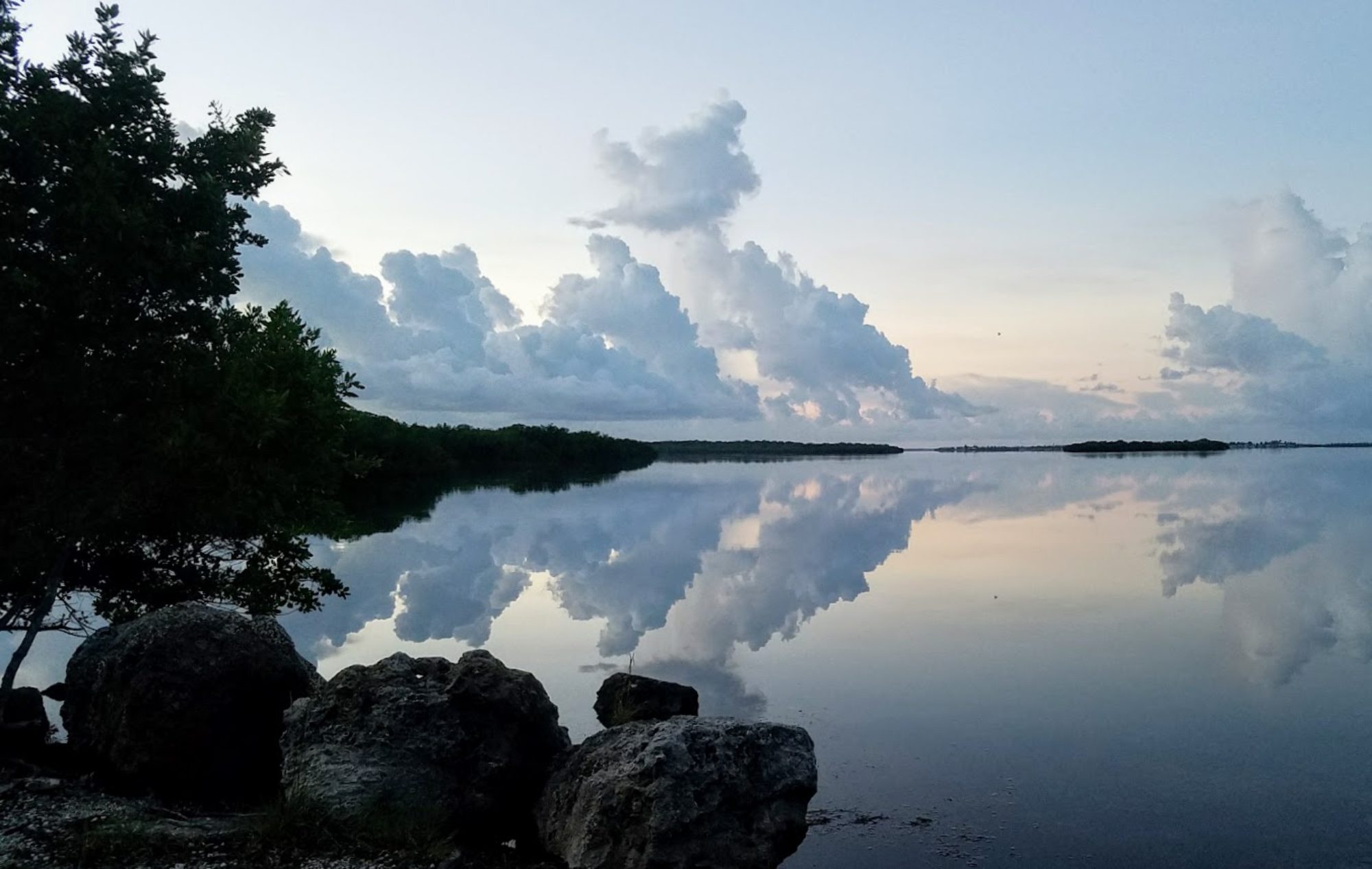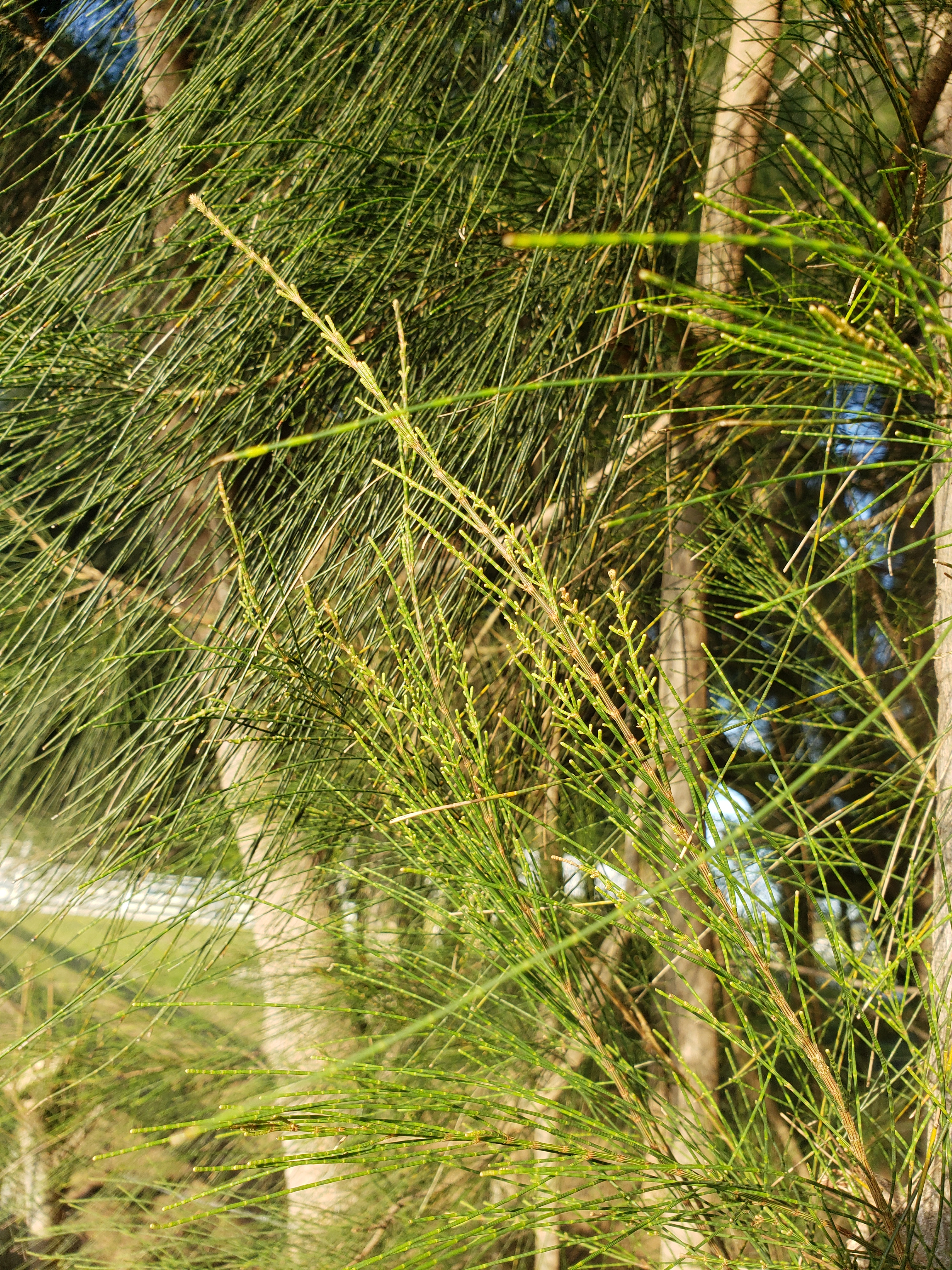Let’s start with the good news about the Australian Pine. Casuarina equisetifolia (also Casuarina cunninghamiana and Casuarina glauca) is a beautiful tree that grows up to 150′. The wood splits easily and burns cleanly; the sap is drinkable; and the gum is edible. . .if you are stuck on a deserted island, you probably would find the Australian Pine a good companion for survival. It provides shade and produces a calming rustle when the breeze moves through it. It was introduced to Florida to stabilize canals and ditches.
But in spite of all these good qualities, the Australian Pine is a Category 1 listed invasive plant. This means that the possession, collection, transportation, cultivation, and importation of them is illegal. But why? Such a beautiful plant, and if you look into efforts to remove them from Gasparilla Island, you will find that they have passionate supporters! Well, beauty is misleading with this tree. Let’s find out why.
The “needles” are actually branches or twigs, with leaves that are tiny and close together. In the photo above, you can see the small leaves in the center of the picture. In the top third of the photo in the foreground, the yellowish lines on the branches are where leaves were previously attached. Branches and twigs are where most of the photosynthesis takes place in this plant. The small cone of the Australian Pine contains a winged seed. These cones, or seed pods, are not pleasant to step on in bare feet! The tree has two bloom seasons each year, and Australian Pine is a significant allergen.
It’s not even a pine! In its native habitat (Australia, south Pacific and southeast Asia), the tree develops very deep roots. In Florida, however, it is shallow-rooted and quickly drops its leaves in a drought. The leaf litter under a stand of Australian Pines can be quite thick and will keep other plants from growing. The fast-growing Australian Pine can outcompete native plants, destroying habitats for animals like marsh rabbits and gopher tortoises. The shallow roots can interfere with the nesting of American crocodiles and sea turtles, and make Australian Pine a poor choice for a state that experiences as many wind events as Florida. In a hurricane, tornado, or even a severe thunderstorm, these roots don’t t hold and they frequently fall over. Downed trees can keep residents from returning home after an evacuation or prevent first responders from providing needed services.
Why not try Sea grapes, buttonwood, or sea hibiscus instead? These Florida natives will give you beauty and shade without the disadvantages of the invasive Australian Pine.


I’m sorry I’m going against all odds.
When I came to South Florida in 1973, Australian Pine Trees were all over Dade County. I told my self these trees are beautiful specialist along the coast. I remember along Tamiami Trail into the Everglades National Park used to be a lot of them planted along the Tamiami Canal and so on.
I love those trees. They make me feel like they are South Florida Native. They should not be destroy. They want to live and they give a lot of shadow to an area like is South Florida a Touch of a cool nice weather.
PLEASE DON’T DESTROY THE AUSTRALIAN PINE TREES IN SOUTH FLORIDA. FOR ME THEY ARE NATIVE. THEY’VE BEEN HERE SINCE THE 1890’S. MORE THAT 100 YEARS. RESPECT NATURE. DON’T DESTROY IT. THANK YOU.
They do provide shade and they are beautoful trees! On that we can agree. But they aren’t native and they do interfere with natural habitats! 100 years is just a blink of time for many non-humans and doesn’t make something native. But I’ll happily sit in the shade of these trees with you anytime! 🙂